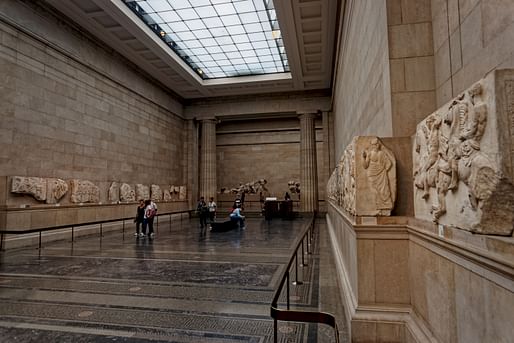

The British Museum is facing legal action from one of the UK’s leading heritage preservation organisations over its refusal to allow the 3D scanning of a piece in its Parthenon marbles collection.
The Institute for Digital Archaeology (IDA) said it would serve an injunction against the museum imminently, raising the stakes in the dispute between the two.
— The Guardian
The 269-year-old institution is said to have refused a request from the Oxford-based Institute for Digital Archaeology (IDA) that would have reproduced a metope from the Acropolis’ south-facing facade for an important proof of concept. The scans are supposed to allow for a robotic replication process that can manipulate the original Pentelic marble material to “sub-millimeter” accuracy, according to the IDA.
“Our aim is to give people a chance to see just how extraordinary a copy can be,” the Institute’s executive director Roger Michel told the Guardian. “Copies [of the Parthenon sculptures] in the past have been low-quality plaster casts. This will be orders of magnitude better. It will help people see and feel the potential of this technology in ways mere words can’t describe.”
The IDA nevertheless attempted last week to create a 3D scan using an “iPad on steroids.” Michel claimed the museum’s own guidelines allowed for such documentation. The museum then claimed otherwise, insisting that its visitor policies did not necessarily obtain when it comes to what it deemed “private organizations” like the IDA.
“How in the world can they deny such a request when the museum boasts about its educational and enlightening role?” Greece’s honorary Director General of Antiquities Elena Korka said in response to the news. “What is so worrying about a scan? To me it seems totally absurd and in total contradiction to the museum’s self-professed role.”
2 Comments
This is absurd, but so is them keeping the marbles in the UK. Anger should be directed towards them giving the marbles back. Then they can allow the scan and display the recreations in London.
It will help people see and feel the potential of this technology in ways mere words can’t describe.
Did the IDA not make an argument about why this might be valuable to the artistic, architectural community, to the world? Are they only trying to promote themselves for PR and economic reasons? And what was the museum's objection?
Block this user
Are you sure you want to block this user and hide all related comments throughout the site?
Archinect
This is your first comment on Archinect. Your comment will be visible once approved.